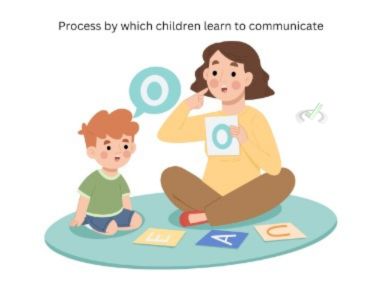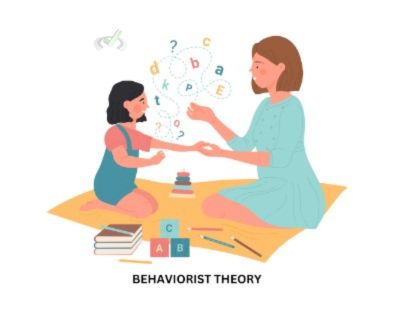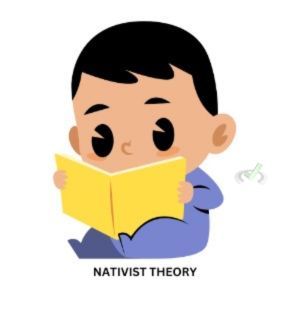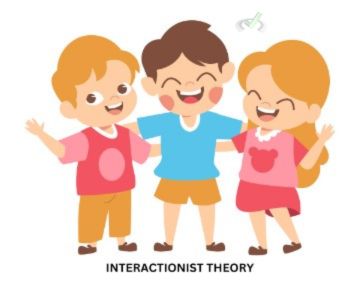Language development is an important part of human growth. It helps us communicate, think, and interact with others. Several theories explain how we learn language. Understanding these theories can help us see how we develop this skill.
I. Introduction to Language Development
Language development is the process by which children learn to communicate. They use words, sentences, and gestures to express themselves. This process starts early in life and continues as we grow. There are different theories about how we acquire language.

II. Key Theories of Language Development
There are three main theories of language development: behaviorist theory, nativist theory, and interactionist theory.
Behaviorist Theory
B.F. proposed the behaviorist theory. Skinner. It suggests that language is learned through imitation, reinforcement, and conditioning.

- Imitation: Children learn language by copying the words and sentences they hear from others. For example, a child might learn to say "mama" by hearing their parents say it.
- Reinforcement: When children say words correctly, they often receive positive feedback. This can be praise or rewards, encouraging them to repeat the behavior.
- Conditioning: Over time, children link certain words with objects or actions. For example, they learn to associate the word "cookie" with the treat they enjoy. Conditioning includes both rewards and avoiding unpleasant situations when using the right words.
Criticism: The behaviorist theory does not fully explain how children learn grammar rules. They often understand these rules without being directly taught.
Nativist Theory
The nativist theory, proposed by Noam Chomsky, suggests that children are born with an innate or natural ability to learn language. According to this theory, humans have a special brain mechanism called the "Language Acquisition Device" (LAD).

- Language Acquisition Device (LAD): The LAD is a theoretical tool in the brain. It helps children learn language quickly. It contains the basic rules of all languages, known as "universal grammar."
- Universal Grammar: This concept suggests that all languages share common structures. For example, all languages have ways to form questions and sentences. The LAD helps children understand these structures, even if they are not directly taught.
Criticism: The nativist theory does not explain the role of social interaction in learning language. It also does not account for differences in language learning across cultures.
Interactionist Theory
The interactionist theory combines ideas from both behaviorist and nativist theories. It suggests that both natural abilities and social interactions influence language development.

- Natural Abilities: Children are born with skills that make it easier to learn language. This includes the ability to hear and differentiate sounds.
- Social Interaction: Interaction with caregivers and others is crucial for language development. Through these interactions, children learn the meanings of words and how to use them. For example, parents often use "child-directed speech" or "motherese." This simplified and exaggerated way of speaking helps children learn language.
Criticism: The interactionist theory can be too broad and may lack specific details on how language learning happens.
III. Key Concepts in Language Development
Several important concepts are associated with language development.
Critical Period
The critical period is a time in early life when learning a language is easiest. Research shows that children are more likely to become fluent in a language if exposed to it during this time. For example, studies of children not exposed to language early (like "feral children") show they struggle with learning language later.
Overgeneralization
Overgeneralization happens when children apply a grammatical rule too broadly. For example, a child might say "goed" instead of "went" because they are using the regular rule of adding "-ed" to form the past tense. This shows that children are actively trying to figure out language rules.
Language Milestones
Language milestones are key stages in language development that most children pass through. These include:
- Babbling: Around 4-6 months, babies start making repetitive sounds, like "ba-ba" or "da-da."
- First Words: Typically, around 12 months, children say their first meaningful words, like "mama" or "ball."
- Two-Word Sentences: Around 18-24 months, children combine words like "more juice" or "big car."
IV. Factors Influencing Language Development
Several factors can influence how children develop language.
Genetics
Genetic factors can influence language development. Some children may have a natural ability for language, making it easier for them to learn new words and grammar.
Environment
The environment is crucial for language development. Children exposed to rich language environments, with lots of talking and reading, tend to develop language skills faster. The amount and quality of interaction with caregivers and others can significantly impact language learning.
Socioeconomic Status
Socioeconomic status (SES) can influence language development. Children from higher SES families often have more access to books and educational resources. They may also experience more language-rich interactions, which can boost their language skills.
V. Applications and Implications
Understanding theories of language development has practical uses in various fields.
Education
Teachers can use these theories to develop better teaching methods. For example, knowing the importance of the critical period can encourage early language exposure. Schools can use interactive methods like storytelling and discussions. This helps in engaging students and improving language learning.
Speech Therapy
Speech therapists use knowledge of language development to help children with speech and language problems. Understanding these theories helps diagnose issues and create effective treatment plans. Techniques like modeling correct speech and using play to encourage language use are often employed.
Parenting
Parents can use these theories to support their child's language development. For example, they can provide a rich language environment by talking, reading, and engaging with their child. Techniques like "dialogic reading," where parents ask questions and encourage discussion during reading, can enhance language skills.
VI. Bridge/Overlap
Language development connects with many areas in psychology and beyond.
Cognitive Development
Language learning is closely linked with cognitive development involving thinking, memory, and problem-solving skills. As children learn language, they also develop the ability to think more complexly.
For example, they start to understand concepts like time and space. Learning new words helps expand their thinking. It also enhances their understanding of the world.
Social Psychology
Language plays a big role in social interactions. How we use language can influence our relationships and how we fit into society. For example, learning to use polite words or understanding jokes can help us get along with others.
Language also helps us understand social norms. These are the rules for how to behave in different situations. Understanding and using language properly can help us navigate different cultural and social settings.
Neuroscience
Neuroscience studies the brain and how it works. In language development, certain areas of the brain are very important. Broca's area helps us produce speech, while Wernicke's area helps us understand language.
Damage to these areas can cause problems with speaking or understanding language. This condition is known as aphasia. Studying these brain areas helps us understand how the brain processes language.
Developmental Psychology
Developmental psychology is the study of how people grow and change over their lives. Studying language milestones, such as when children start talking or forming sentences, helps us understand child development stages.
Knowing about the critical period for language learning is also important. This is when the brain is most ready to learn a language.
This knowledge can help in designing better educational programs. It also helps understand how children’s language skills develop alongside other skills. These skills include motor skills and social abilities.
VII. Wrap-Up and Key Terms
Let's summarize the key points:
- Behaviorist Theory: Language is learned through imitation, reinforcement, and conditioning.
- Nativist Theory: Children are born with an innate ability to learn language, supported by the Language Acquisition Device (LAD).
- Interactionist Theory: Language development is influenced by both natural abilities and social interactions.
- Critical Period: During early life, language acquisition occurs most easily.
- Overgeneralization: Applying grammatical rules too broadly.
- Language Milestones: Key stages in language development, like babbling and first words.
VIII. Practice
Test your understanding with these questions:
Sample Practice Question 1
What does the nativist theory suggest about language learning?
A. It is learned entirely through imitation.
B. It involves a special brain mechanism called the LAD.
C. It is influenced only by social interactions.
D. It is the same as learning to ride a bike.
Ans. B
The nativist theory propose that children are born with an innate ability to learn language, supported by the Language Acquisition Device (LAD).
Sample Practice Question 2
Which factor is NOT typically associated with language development?
A. Genetics
B. Environment
C. Socioeconomic Status
D. Weather
Ans. D
Weather is not typically associated with language development. Factors like genetics, environment, and socioeconomic status play a significant role.







 To help you achieve your goal MCAT score, we take turns hosting these
To help you achieve your goal MCAT score, we take turns hosting these 





















 reviews on TrustPilot
reviews on TrustPilot